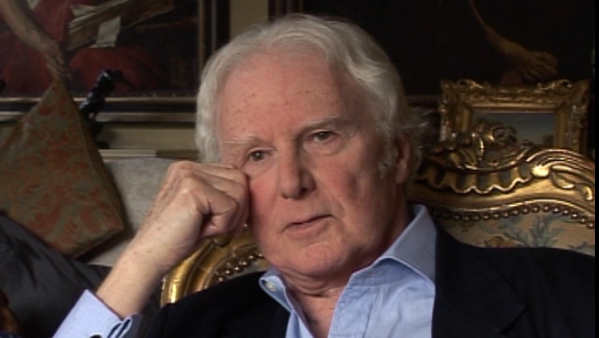NEXT STORY

The pull of journalism
RELATED STORIES

NEXT STORY

The pull of journalism
RELATED STORIES


|
Views | Duration | |
|---|---|---|---|
| 81. Casual sex on the Thames river towpath | 347 | 06:54 | |
| 82. Performing homosexual acts in public places | 321 | 03:46 | |
| 83. AIDS has changed everything | 235 | 06:13 | |
| 84. A religious upbringing and my longing to be a priest | 225 | 02:51 | |
| 85. The need for chastity in celibacy | 226 | 05:54 | |
| 86. Becoming the art critic at the Evening Standard | 210 | 04:03 | |
| 87. The pull of journalism | 206 | 03:53 | |
| 88. Writing destructive art reviews | 292 | 06:24 | |
| 89. Artists are my targets | 244 | 02:49 | |
| 90. To be an art critic is to take a lonely path | 232 | 02:45 |

In addition to the work that came to me from Tatler, I had the support of commissions from a poxy little magazine called Art and Artists, and I wrote… that came out ten times a year, too, but they paid £30 for a thousand-word article. You can’t do much with 30 quid, even in 1981 or '82. But it was useful experience, because, you know, you have to find your way as a wordsmith when you’re earning your living as a writer. You can’t just sit down and write. It doesn’t happen like that. But I found writing for Art and Artists quite rewarding, not financially, but in terms of experience.
And again, I was perfectly frank in my criticism of things, and I think that it was that directness that eventually appealed to the London Evening Standard, which came out every evening and had an art critic called Richard Cork. And what had happened was that Richard, who is very much the critic of the present-day jargon, in other words, lots of sentences, but no meaning, obscure and difficult. The Evening Standard had got rid of him. And, I mean, they told me that they never understood a word that he wrote, and that all the letters that they got from correspondents was that the readers didn’t understand either. So it was a waste of a page. And that they’d seen my stuff in Tatler and wanted me to do that once a week or thereabouts. And I was delighted, you know, because once you are working for a daily paper, then you’re there.
And I had no more difficulty about being given catalogues. And I enjoyed it. It… there was a pent-up 50 years of looking at things, 50 years of having an opinion and never expressing it, 50 years of experience which, you know, there was a great well of stuff on which I could draw. So my criticisms were informed and well-founded, as well as mischievous and often destructive. It was the mischief and the destructiveness that the paper wanted, and it was the solid ground that I wanted to give them. But we managed to find a balance between the two. And so week after week after week, I would write about this, that and the other thing. And that again was an intellectual stimulus, because you might be writing about Michelangelo drawings one minute, and somebody who is switching a light on and off as a work of art in the next.
And you have to find the language for these, because they are very different things. You cannot write about contemporary art in the same terms as you write about historic art.
Born in England, Brian Sewell (1931-2015) was considered to be one of Britain’s most prominent and outspoken art critics. He was educated at the Courtauld Institute of Art and subsequently became an art critic for the London Evening Standard; he received numerous awards for his work in journalism. Sewell also presented several television documentaries, including an arts travelogue called The Naked Pilgrim in 2003. He talked candidly about the prejudice he endured because of his sexuality.
Title: Becoming the art critic at the "Evening Standard"
Listeners: Christopher Sykes
Christopher Sykes is an independent documentary producer who has made a number of films about science and scientists for BBC TV, Channel Four, and PBS.
Tags: Tatler, Art & Artists, London Evening Standard, Evening Standard, Richard Cork, Michelangelo di Lodovico Buonarroti Simoni, Michelangelo
Duration: 4 minutes, 3 seconds
Date story recorded: April 2013
Date story went live: 04 July 2013